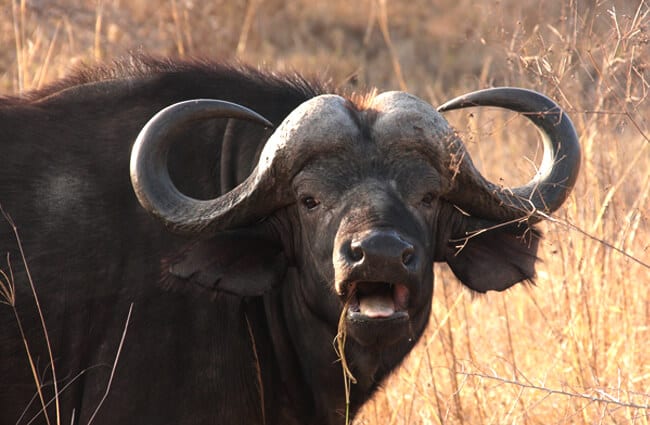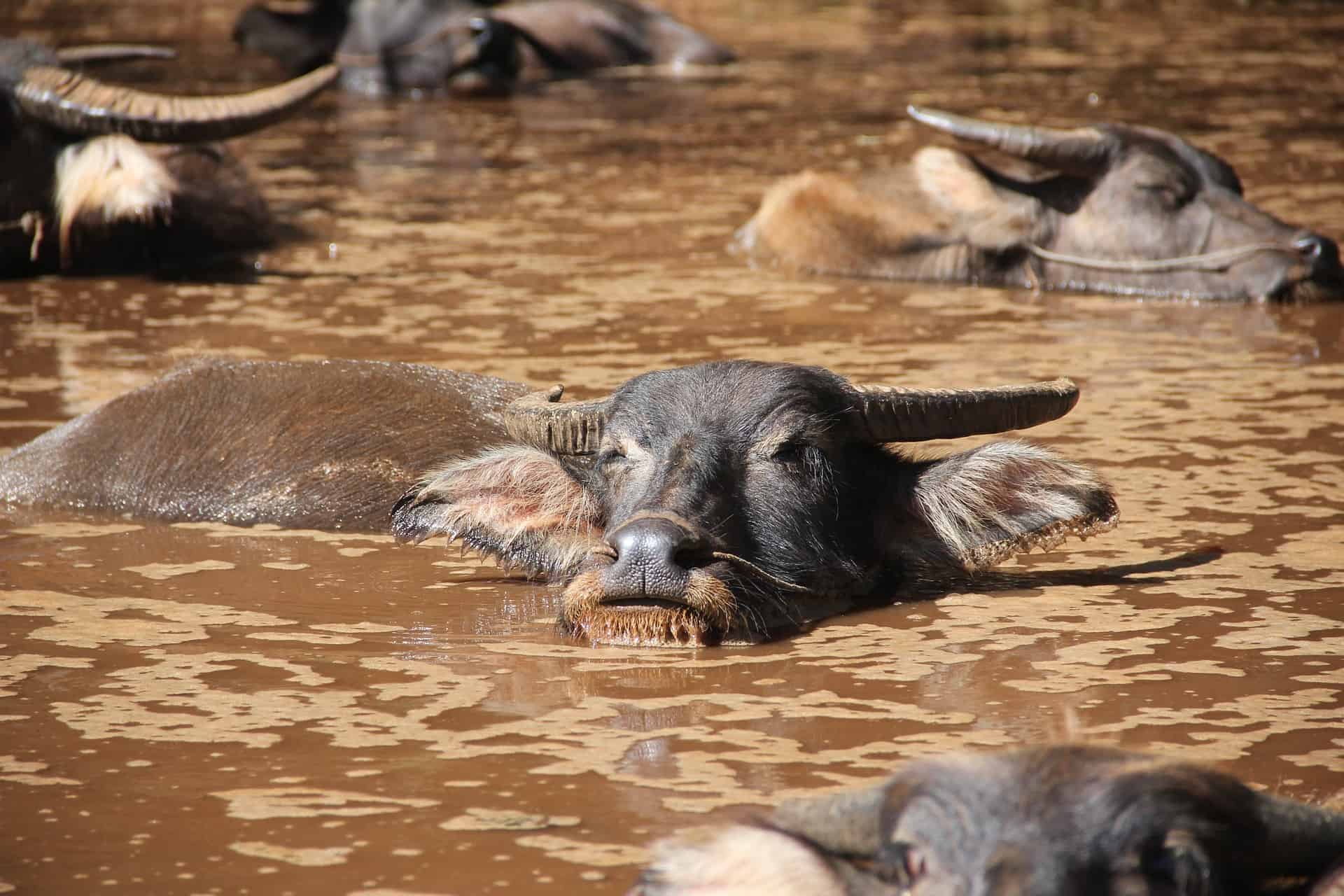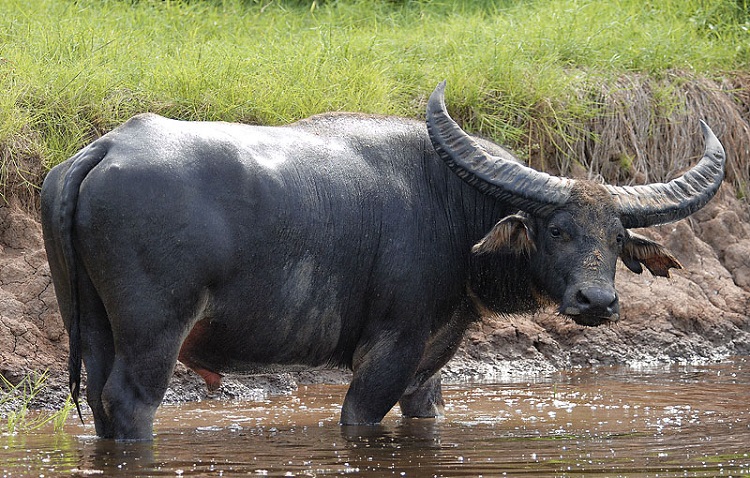The water buffalo (Bubalus bubalis), also known as the domestic water buffalo, Asian water buffalo, or Asiatic water buffalo, is a truly remarkable creature. Originating in the Indian subcontinent and Southeast Asia, these large bovids have played an indispensable role in human civilization for millennia. Their immense strength, docile nature, and adaptability have made them invaluable partners in agriculture and a vital part of ecosystems across the globe.
Beyond their utility, water buffaloes are fascinating creatures known for their sheer size and remarkable adaptability. From their distinctive thick, backward-curving horns to their powerful build, everything about them speaks of resilience and strength. This article delves into the world of the water buffalo, exploring their origins, global distribution, unique characteristics, and their profound impact on human societies and the natural world.
Table of Contents
- What is a Water Buffalo?
- The Bovini Tribe Connection
- A Global Journey: Distribution and Adaptability
- Domesticated Giants: Breeds and Numbers
- Wild vs. Domesticated Forms
- Physical Characteristics: More Than Just Size
- The Role of Water Buffalo in Human Society
- Understanding Water Buffalo Behavior
- Rare Incidents: When Things Go Wrong
- Conservation Status: Protecting the Wild
- Ensuring Safety Around Water Buffalo
- Conclusion: The Enduring Legacy of the Water Buffalo
What is a Water Buffalo?
The water buffalo (Bubalus bubalis) is a magnificent large bovid, a member of the Bovidae family, which also includes cattle, goats, and sheep. Originating from the Indian subcontinent and Southeast Asia, these animals have been integral to the agricultural landscape of these regions for thousands of years. They are often compared to oxen due to their similar build and their historical role as draft animals, but they possess unique characteristics that set them apart. Water buffaloes are large domesticated mammals, and their presence is widely distributed throughout the world, particularly in Asia, where they are most numerous and culturally significant.
- Mehdi Hasan Journalist Wife
- Vegamovie
- Sherrie Swafford 2024
- Aitana Bonmat%C3%AD Couple Maria
- Kylayesenosky
The Bovini Tribe Connection
The water buffalo, or Asian buffalo as it is often called, holds a prominent position as the largest member of the Bovini tribe. This fascinating tribe encompasses a diverse range of large, cloven-hoofed mammals, including the majestic yak, the powerful bison, the formidable African buffalo, and various other species of wild cattle. This classification highlights the water buffalo's evolutionary lineage and its close relationship to other iconic bovines found across different continents. Despite these familial ties, the water buffalo maintains distinct traits, such as its affinity for water and its unique horn structure, which differentiate it from its Bovini relatives.
A Global Journey: Distribution and Adaptability
While their origins lie firmly in the Indian subcontinent and Southeast Asia, the journey of the water buffalo has been truly global. Their remarkable adaptability has allowed them to thrive in diverse climates and environments far beyond their native lands. Today, these resilient animals are also found in Europe, Australia, North America, South America, and various other parts of the world. This widespread distribution is a testament to their ability to adapt to different ecological niches, from the humid rice paddies of Asia to the drier rangelands of Australia and the Americas. Their presence in these new territories often reflects human migration and agricultural practices, as water buffalo were introduced to assist with farming, particularly in wetland cultivation. Their ability to work in muddy, waterlogged conditions where other livestock might struggle makes them exceptionally valuable in many agricultural systems worldwide.
Domesticated Giants: Breeds and Numbers
The domestication of the water buffalo has led to an impressive array of distinct breeds, each adapted to specific local conditions and human needs. There are 74 recognized breeds of domestic water buffalo, a testament to centuries of selective breeding and their widespread utility. These breeds vary significantly in size, horn shape, coat color, and productive traits such as milk yield or draft capability. Collectively, these domestic water buffalo number some 165 million worldwide, making them one of the most numerous domesticated large animals on the planet. This staggering figure underscores their critical role in global food security and the livelihoods of millions of people, particularly in developing countries where they provide milk, meat, and vital labor for agriculture.
- Phil Wickham Wife Cancer
- Zefoy App
- What Was Daisys Destruction
- Rachel Maddow Daughter
- Sherrie Swafford Now
Wild vs. Domesticated Forms
When discussing water buffalo (Bubalus bubalis), it's important to recognize that there are two distinct forms: wild and domestic. The wild form, often referred to as the wild Asian water buffalo or Arni, is the ancestor of all domestic water buffalo. These magnificent animals are larger and more aggressive than their domesticated counterparts, typically found in isolated, protected areas. In contrast, the domestic water buffalo has been selectively bred over millennia for traits that make them amenable to human interaction and agricultural work. While genetically similar, the behavioral and physical differences between the wild and domestic forms are significant, reflecting their divergent evolutionary paths. The domestic variety is the one most commonly encountered globally, serving as a cornerstone of rural economies.
Physical Characteristics: More Than Just Size
A water buffalo is undeniably a large animal, but their physical characteristics extend far beyond mere bulk. Their most striking features are their impressive horns. The water buffalo is a large animal with thick horns that typically point back towards its shoulders, often curving outwards in a graceful arc. These horns can be incredibly long, sometimes spanning several feet from tip to tip, and are a formidable defense mechanism. Their coat color usually ranges from dark grey to black, though some breeds can be brown or even albino. They possess strong, sturdy legs, broad hooves that are well-suited for muddy terrain, and a powerful neck and shoulders, which are essential for pulling plows and carts. Their skin is relatively thick and sparsely haired, making them susceptible to sunburn, which is why they frequently seek out water or mud wallows – a behavior that also gives them their name. These physical adaptations allow them to thrive in hot, humid environments and perform heavy labor, distinguishing them from other bovines.
The Role of Water Buffalo in Human Society
The impact of water buffalo on human societies, especially in Asia, cannot be overstated. For thousands of years, these animals have been the backbone of agricultural economies. Their primary role has been as draft animals, pulling plows through rice paddies and other fields, transporting goods, and powering various farm machinery. Their strength and ability to work in waterlogged conditions make them superior to other draft animals in many wetland farming systems. Beyond labor, water buffalo are also vital for their milk, which is richer in fat and protein than cow's milk and is used to produce popular dairy products like mozzarella cheese in Italy and various sweets and fermented products across Asia. They also provide meat, hides for leather, and dung for fertilizer and fuel. In many rural communities, a family's wealth is often measured by the number of water buffalo they own. They are not just livestock; they are integral members of farming families, contributing significantly to their livelihoods and food security. Their gentle temperament, especially the domesticated varieties, makes them manageable even for small-scale farmers.
Understanding Water Buffalo Behavior
Water buffalo, particularly the domesticated varieties, are generally known for their calm and docile temperament. They are often described as intelligent and responsive animals, capable of forming strong bonds with their handlers. Despite their immense size, they are not inherently aggressive or "psychotic," as some misconceptions might suggest. Their behavior is typically characterized by a peaceful disposition, especially when they are accustomed to human presence and proper handling. They enjoy wallowing in mud or water, a crucial behavior for thermoregulation and protection against insects. Social animals, they often live in herds and exhibit cooperative behaviors. However, like any large animal, they are powerful and can react defensively if they feel threatened, startled, or if their young are perceived to be in danger. Understanding their natural behaviors and respecting their space is crucial for safe interaction.
Rare Incidents: When Things Go Wrong
While generally docile, it is important to acknowledge that water buffalo are powerful animals, and incidents, though rare, can occur. The tragic event in Oklahoma serves as a stark reminder of this. "Oklahoma emergency crews responded to a strange attack call Friday night after a man was attacked by water buffalo near Jones and later died from his injuries." Further reports clarified, "A Jones man is dead after being attacked by two water buffalo he bought on Thursday, according to police." This incident highlights that even newly acquired animals, or those not fully accustomed to their new environment or handler, can pose risks. It underscores the importance of understanding animal behavior, especially when dealing with large, strong creatures. Such incidents are exceptional and do not reflect the general temperament of the species, but they emphasize the need for caution, proper training, and responsible animal husbandry. It is crucial for owners, especially new ones, to be aware of the potential for danger and to take all necessary precautions.
Conservation Status: Protecting the Wild
While domestic water buffalo thrive in vast numbers, the fate of their wild counterparts is a cause for significant concern. "Water buffalo, from Asia, are neither bison nor psychotic, and the wild variety is in a lot of trouble." The wild Asian water buffalo (Bubalus arnee), the ancestor of all domestic breeds, faces severe threats to its survival. Habitat loss and fragmentation due to agricultural expansion, human encroachment, and infrastructure development are primary drivers of their decline. Competition with domestic livestock for grazing land and water resources, as well as interbreeding with domestic buffalo, further endanger their genetic purity. Poaching for meat and horns also contributes to their dwindling numbers. As a result, the wild water buffalo is classified as endangered by the IUCN Red List, with only a few thousand individuals remaining in scattered, isolated populations across India, Nepal, Bhutan, and Thailand. Conservation efforts are crucial to protect these magnificent animals, focusing on habitat preservation, anti-poaching measures, and genetic conservation programs to ensure the survival of this vital species.
Ensuring Safety Around Water Buffalo
Given their immense size and strength, ensuring safety around water buffalo, especially for those who are not experienced handlers, is paramount. For individuals considering owning water buffalo, or those who interact with them regularly, education and caution are key. Always approach these animals calmly and predictably, avoiding sudden movements or loud noises that could startle them. Respect their personal space, particularly if they have calves, as mothers can be very protective. If you are new to handling water buffalo, seek guidance from experienced farmers or animal behaviorists. Understanding their body language and recognizing signs of discomfort or aggression is vital. Providing adequate space, proper nutrition, and a stable environment can also contribute to a calmer disposition. While the vast majority of interactions are peaceful, remembering that these are powerful animals capable of causing serious injury is crucial for maintaining safety for both humans and the animals themselves. "Everything you should know about the water buffalo" includes not just their utility and biology, but also responsible interaction and management.
Conclusion: The Enduring Legacy of the Water Buffalo
From the rice paddies of Asia to diverse landscapes across the globe, the water buffalo (Bubalus bubalis) stands as a testament to the enduring bond between humans and animals. These large, adaptable bovids have not only shaped agricultural practices but have also become cultural icons, symbolizing strength, resilience, and prosperity in many societies. We've explored their origins in the Indian subcontinent and Southeast Asia, their global spread, the impressive diversity of their 74 domestic breeds numbering some 165 million, and their distinct physical characteristics, including those thick, backward-pointing horns. We've also touched upon the critical differences between their thriving domestic forms and their endangered wild relatives, highlighting the urgent need for conservation.
While generally known for their docile nature, it's vital to approach these powerful animals with respect and understanding, acknowledging that rare incidents can occur, as sadly demonstrated by the events in Oklahoma. Their role extends far beyond mere labor; they are providers of milk, meat, and vital resources, contributing significantly to global food security. The story of the water buffalo is one of incredible adaptation, invaluable partnership, and a future that hinges on continued responsible stewardship. If you found this journey into the world of the water buffalo as fascinating as we did, we encourage you to share your thoughts in the comments below or share this article with others who might appreciate learning more about these magnificent creatures. Explore more articles on our site to deepen your understanding of the diverse animal kingdom and its vital connection to human life.
Related Resources:



Detail Author:
- Name : Ms. Della Quitzon
- Username : lspinka
- Email : delfina06@waelchi.com
- Birthdate : 2004-08-10
- Address : 89718 Bonnie Neck Suite 361 Casperfurt, AK 32204
- Phone : +19403208189
- Company : Auer-Lehner
- Job : Healthcare Practitioner
- Bio : Dicta minima sit ipsam. Rerum adipisci omnis sequi adipisci nisi. Qui nesciunt provident fugit iusto magni et.
Socials
twitter:
- url : https://twitter.com/thalia.kshlerin
- username : thalia.kshlerin
- bio : Fuga ut nihil consequatur non. In fuga magnam ea qui natus aut blanditiis. Velit ipsa dolor odio eum perferendis qui sapiente.
- followers : 4482
- following : 1119
linkedin:
- url : https://linkedin.com/in/thaliakshlerin
- username : thaliakshlerin
- bio : Error maxime vel commodi incidunt et.
- followers : 4748
- following : 928
tiktok:
- url : https://tiktok.com/@thalia_xx
- username : thalia_xx
- bio : Id neque voluptates sed sint at fugit dolor.
- followers : 3765
- following : 1639
instagram:
- url : https://instagram.com/thalia.kshlerin
- username : thalia.kshlerin
- bio : Cum dolores aut veritatis tempore. Quia et tempora et.
- followers : 1340
- following : 2873
facebook:
- url : https://facebook.com/thalia_kshlerin
- username : thalia_kshlerin
- bio : Molestiae est ea optio consequatur. Et est praesentium illo qui ad.
- followers : 4626
- following : 2176